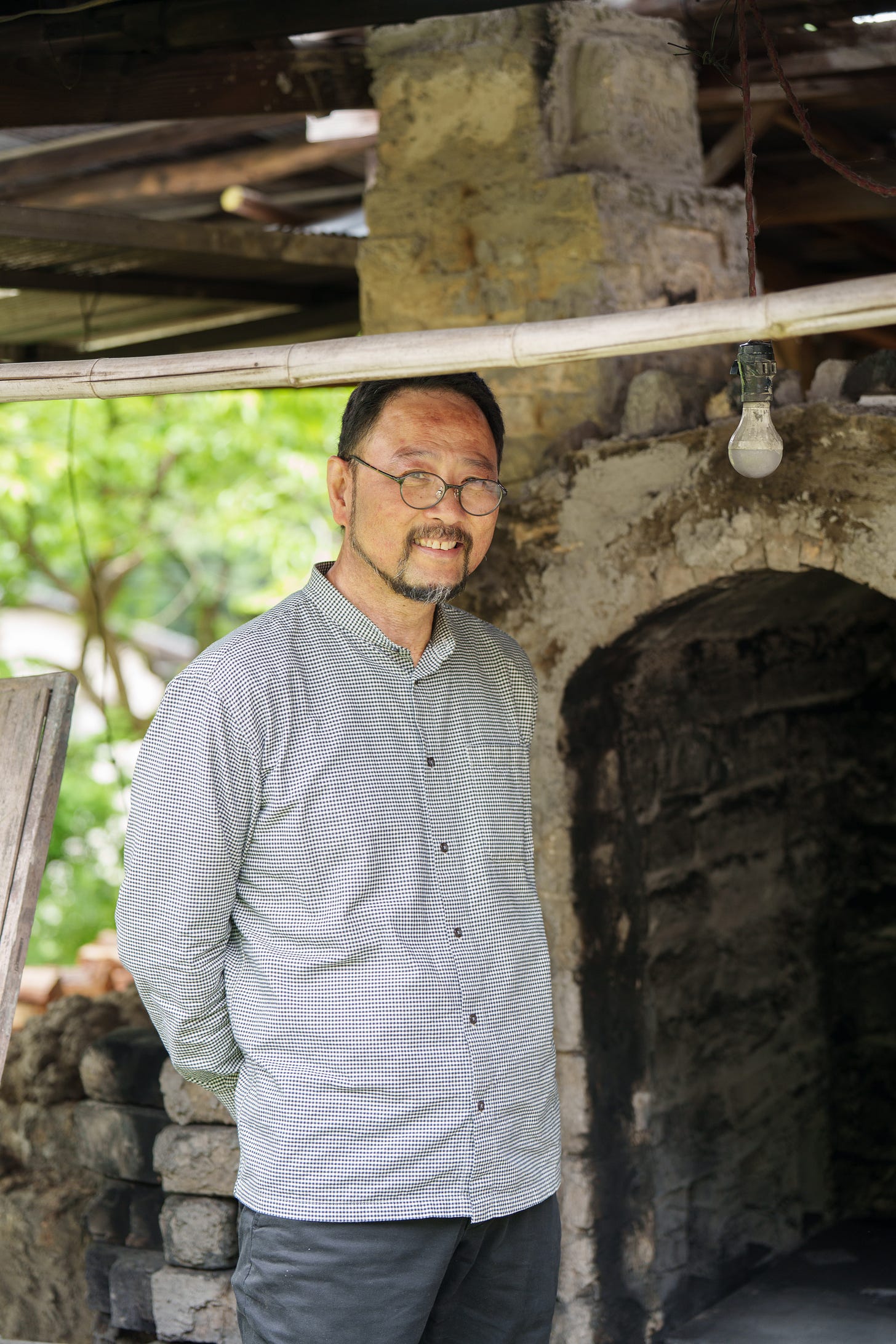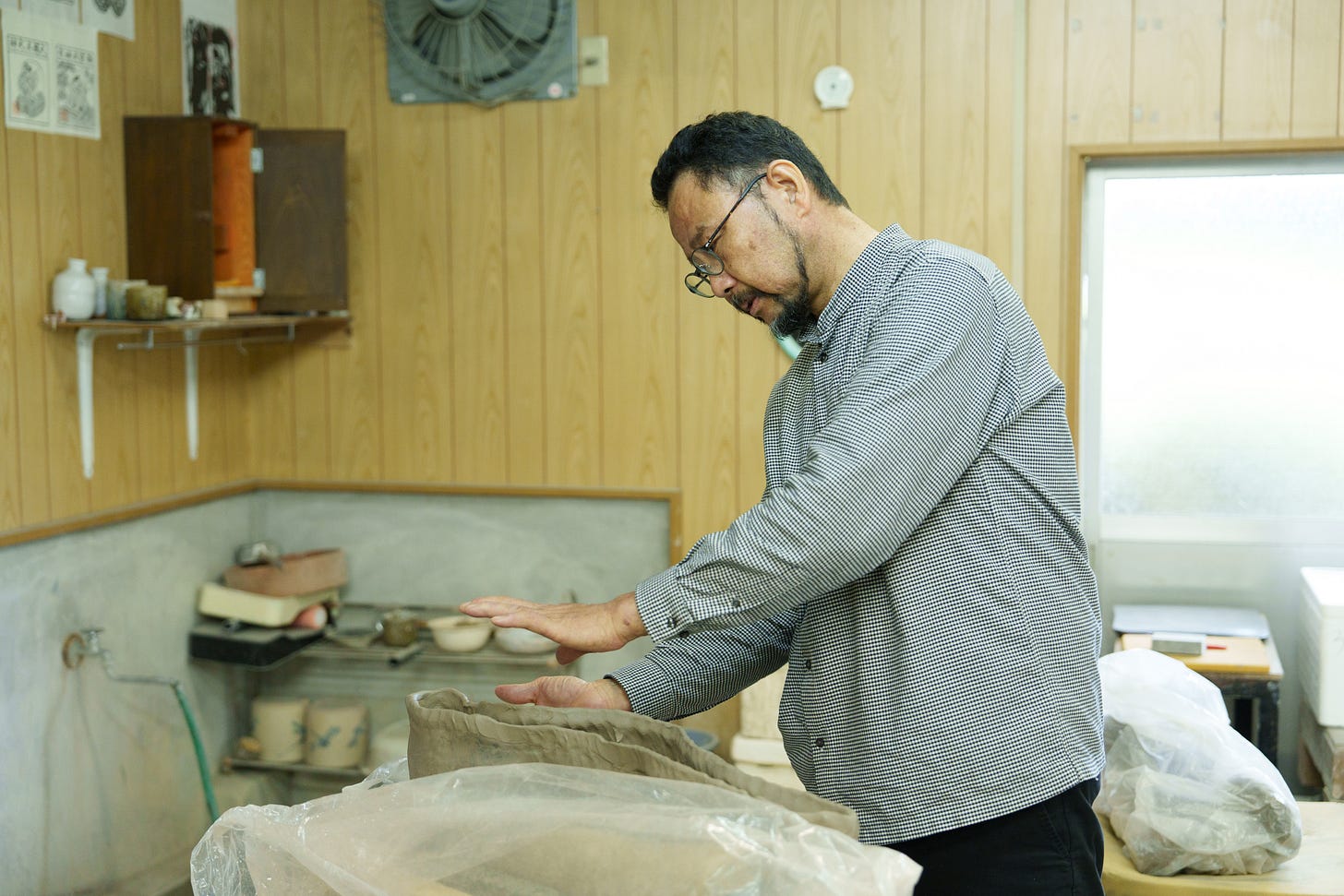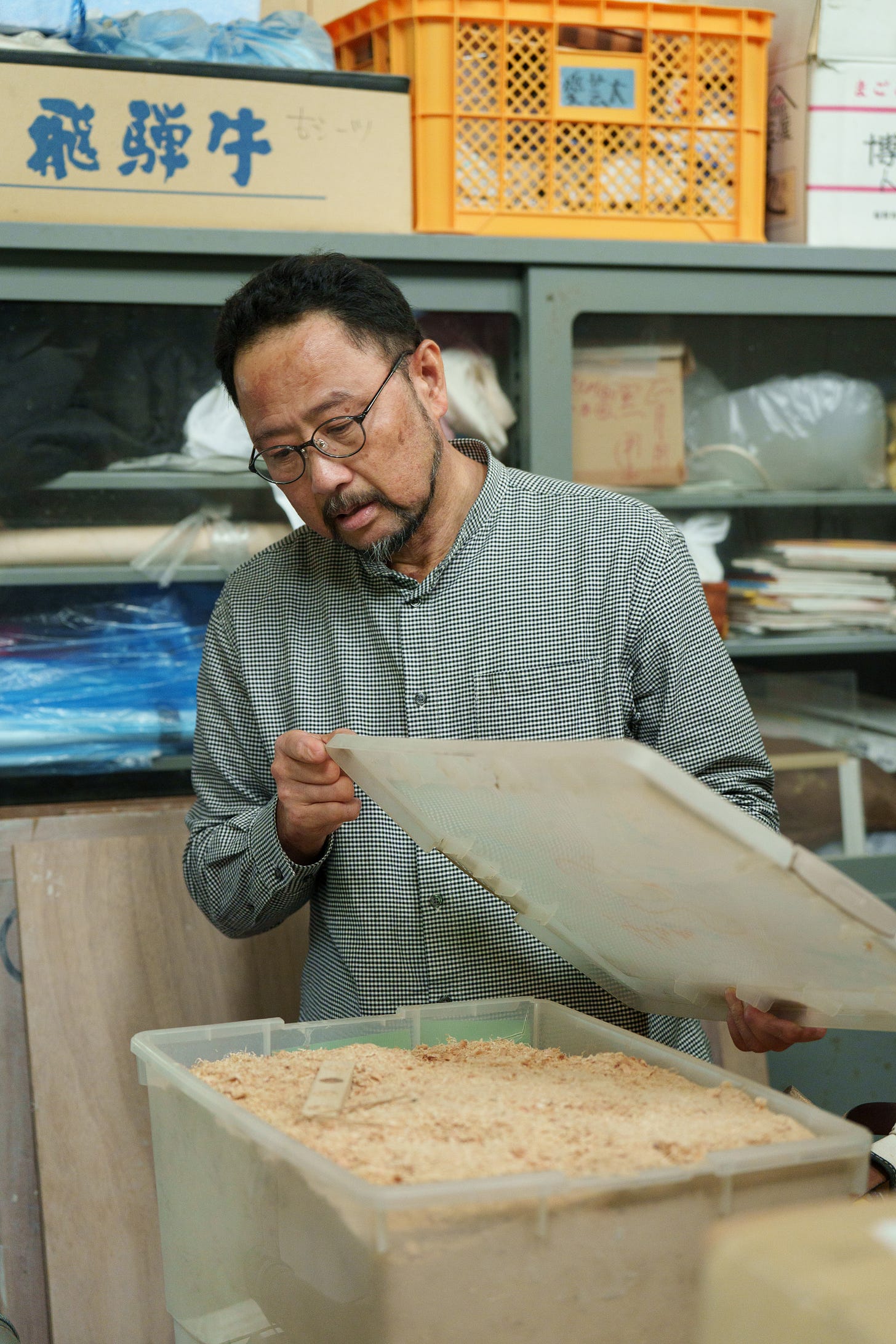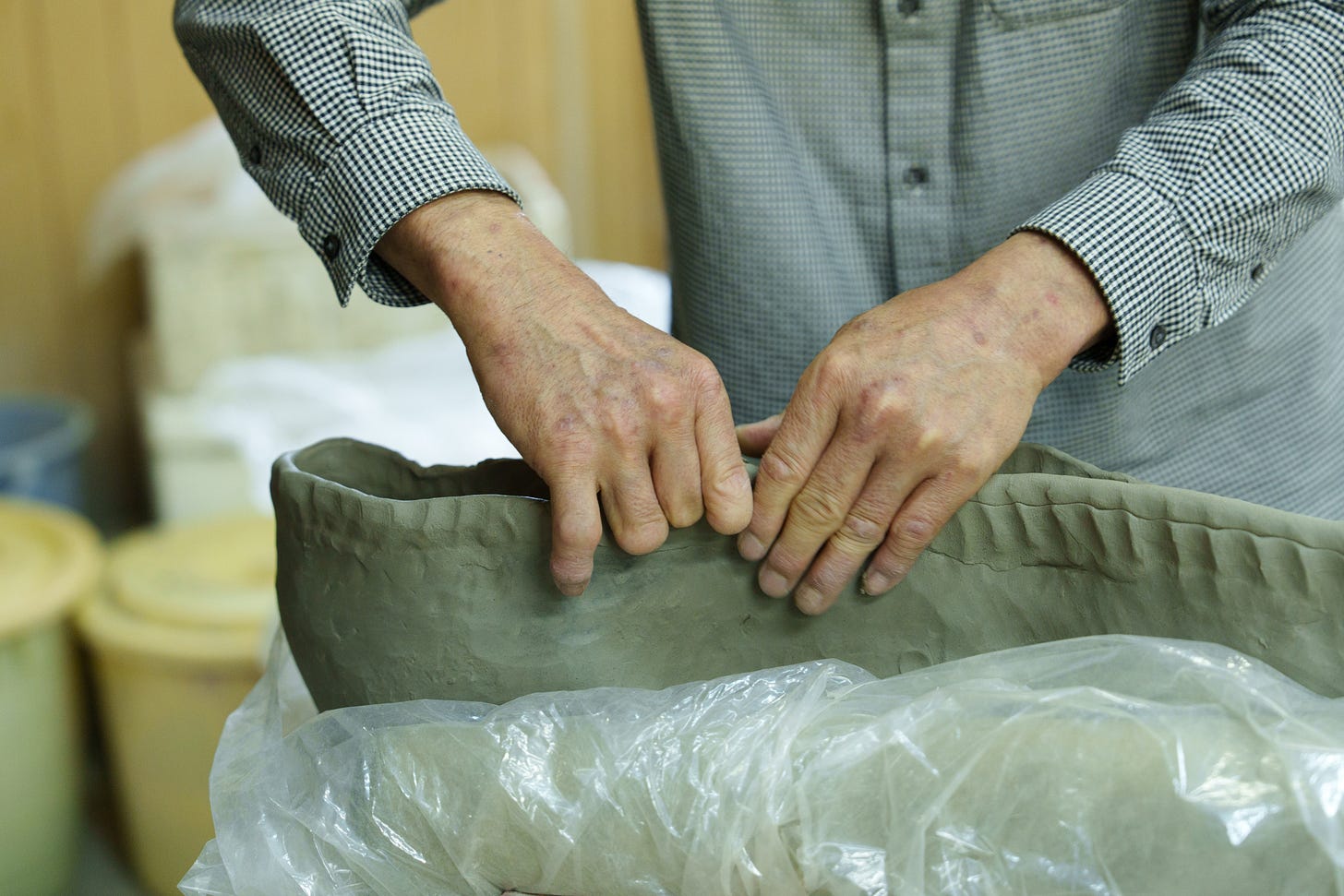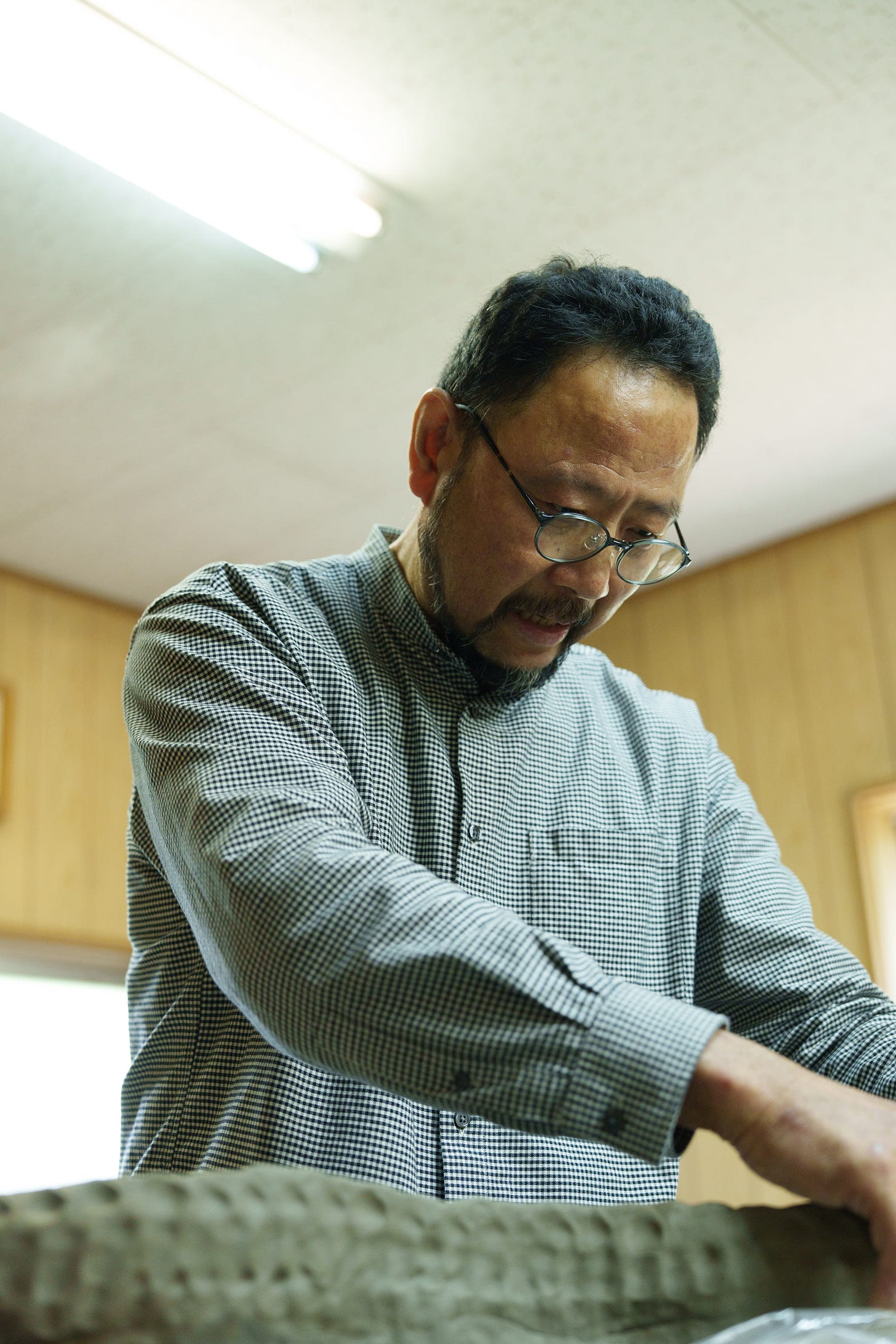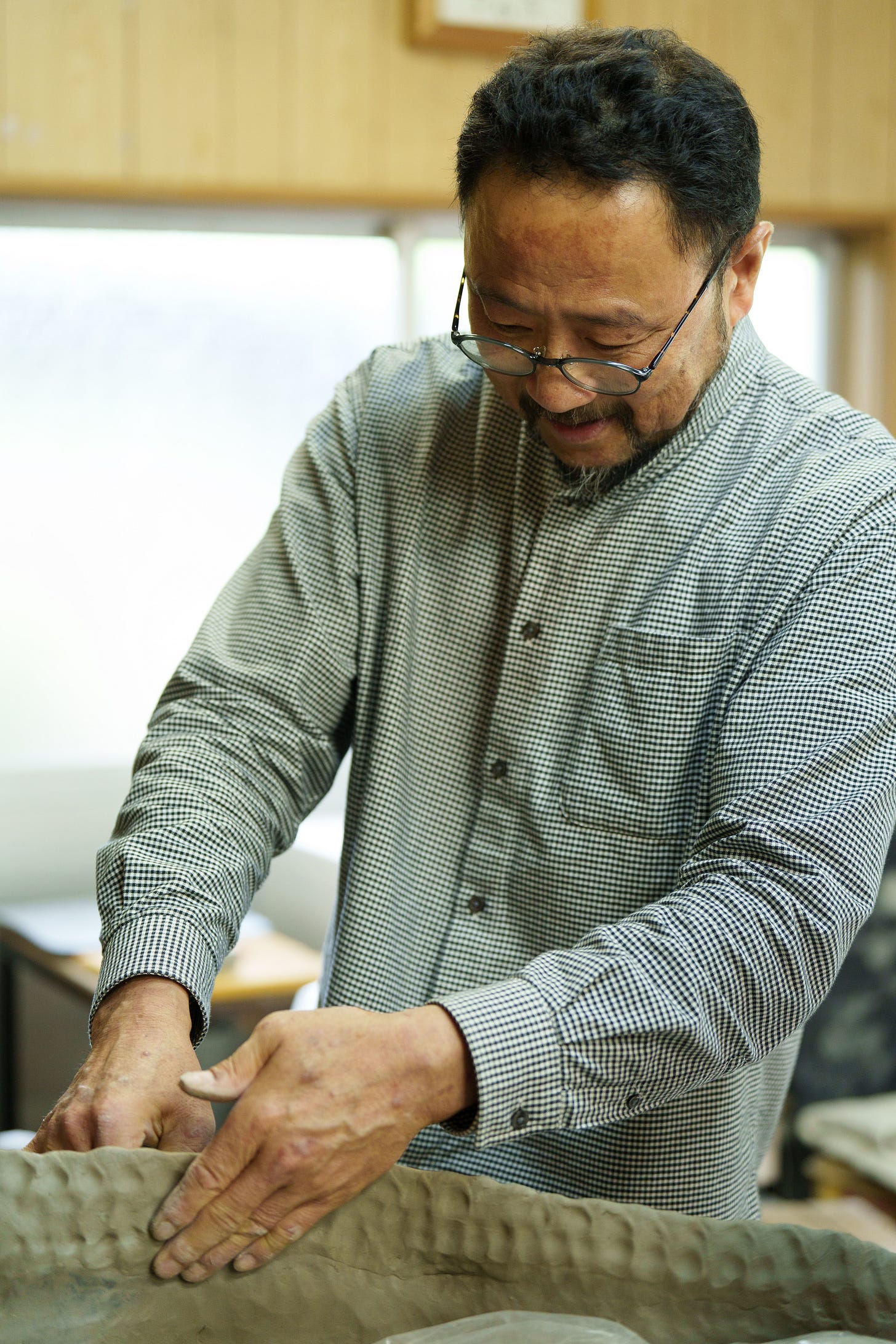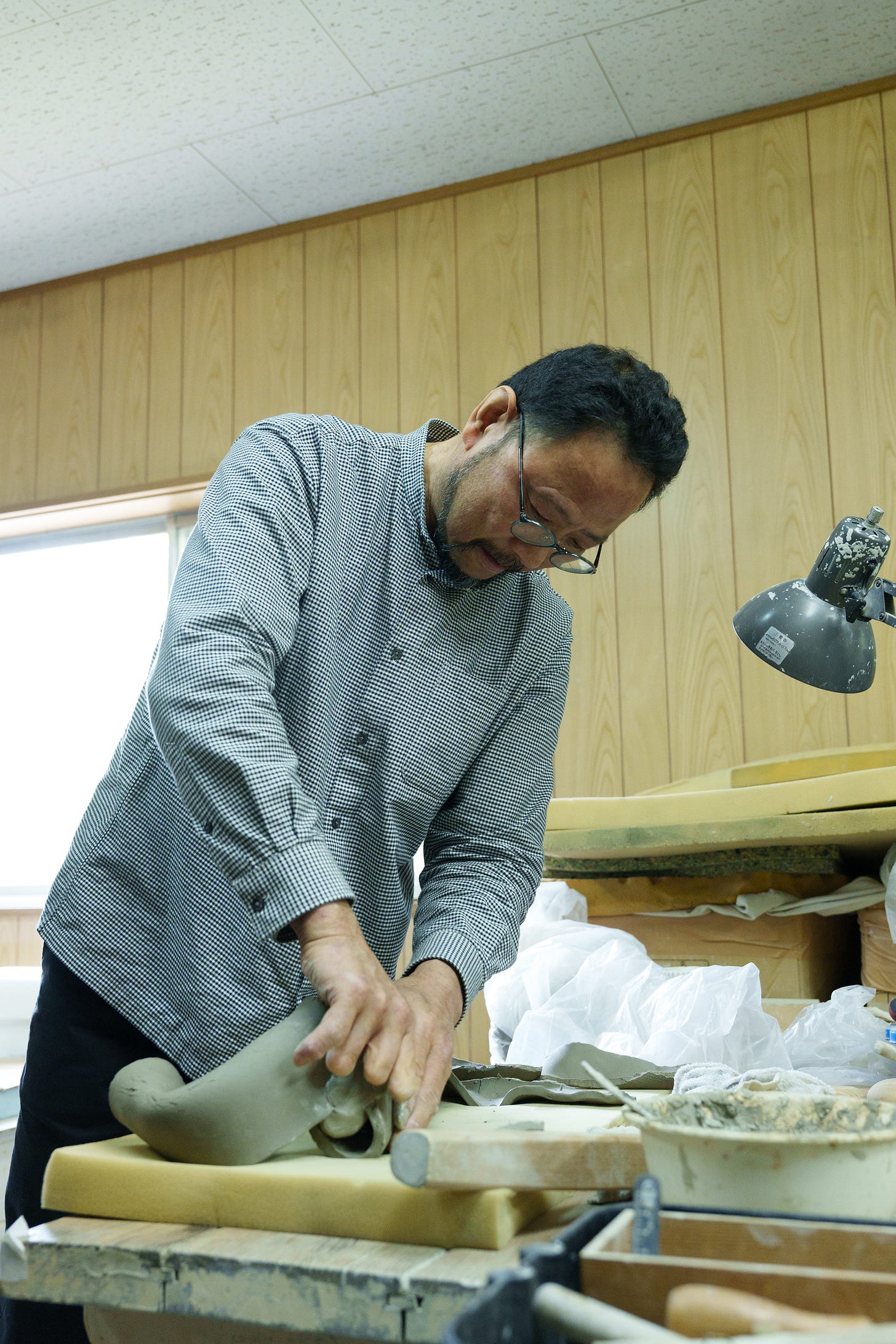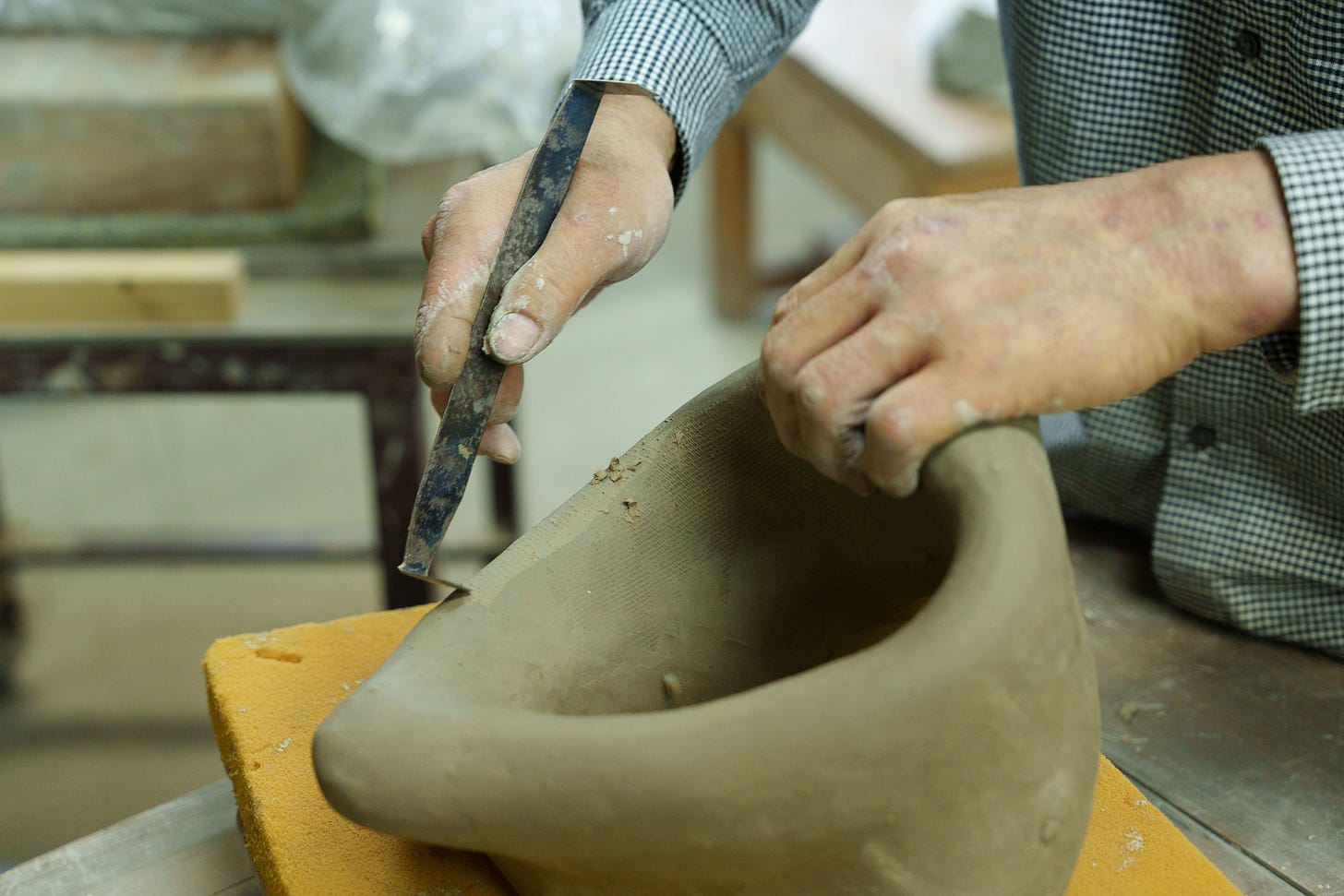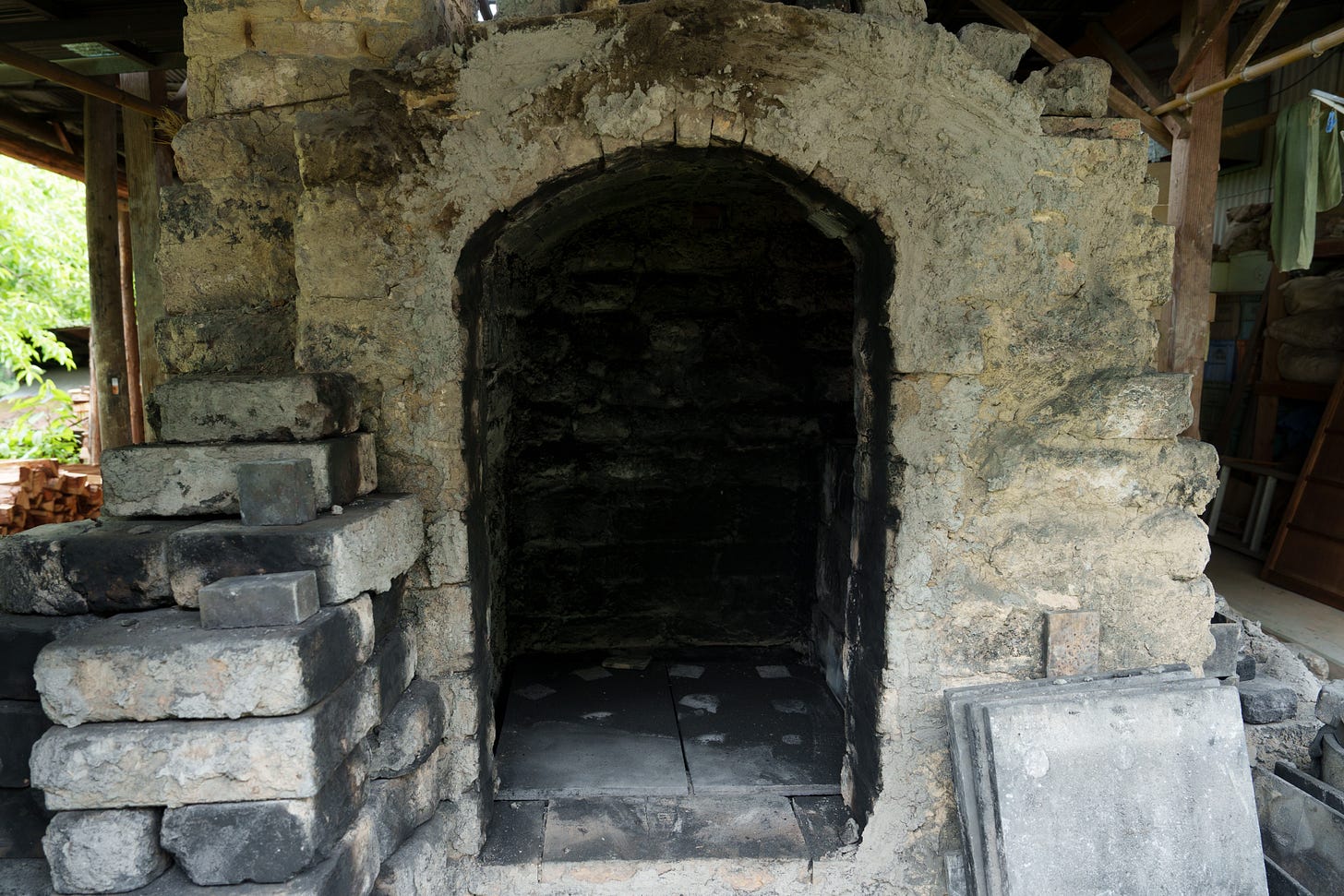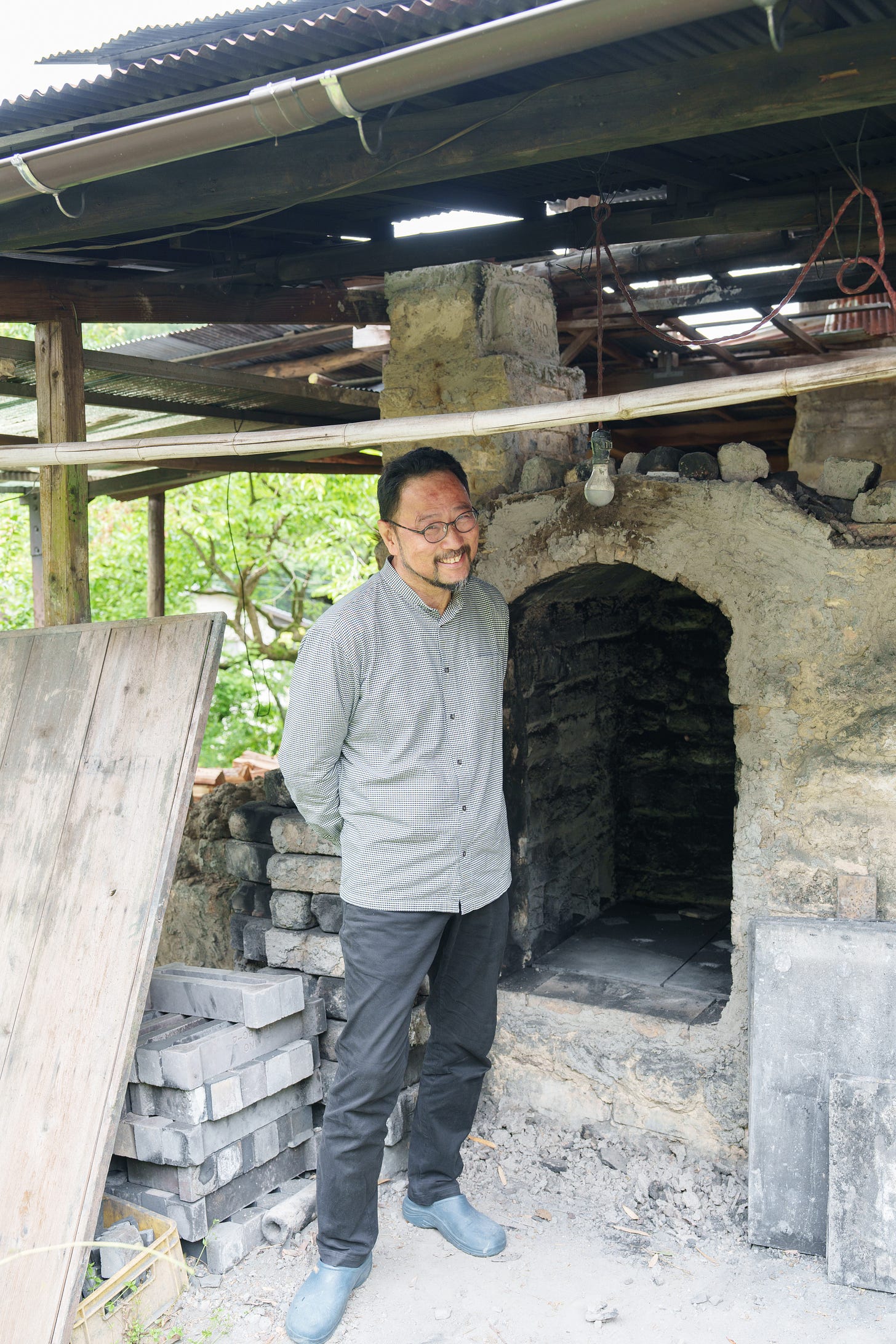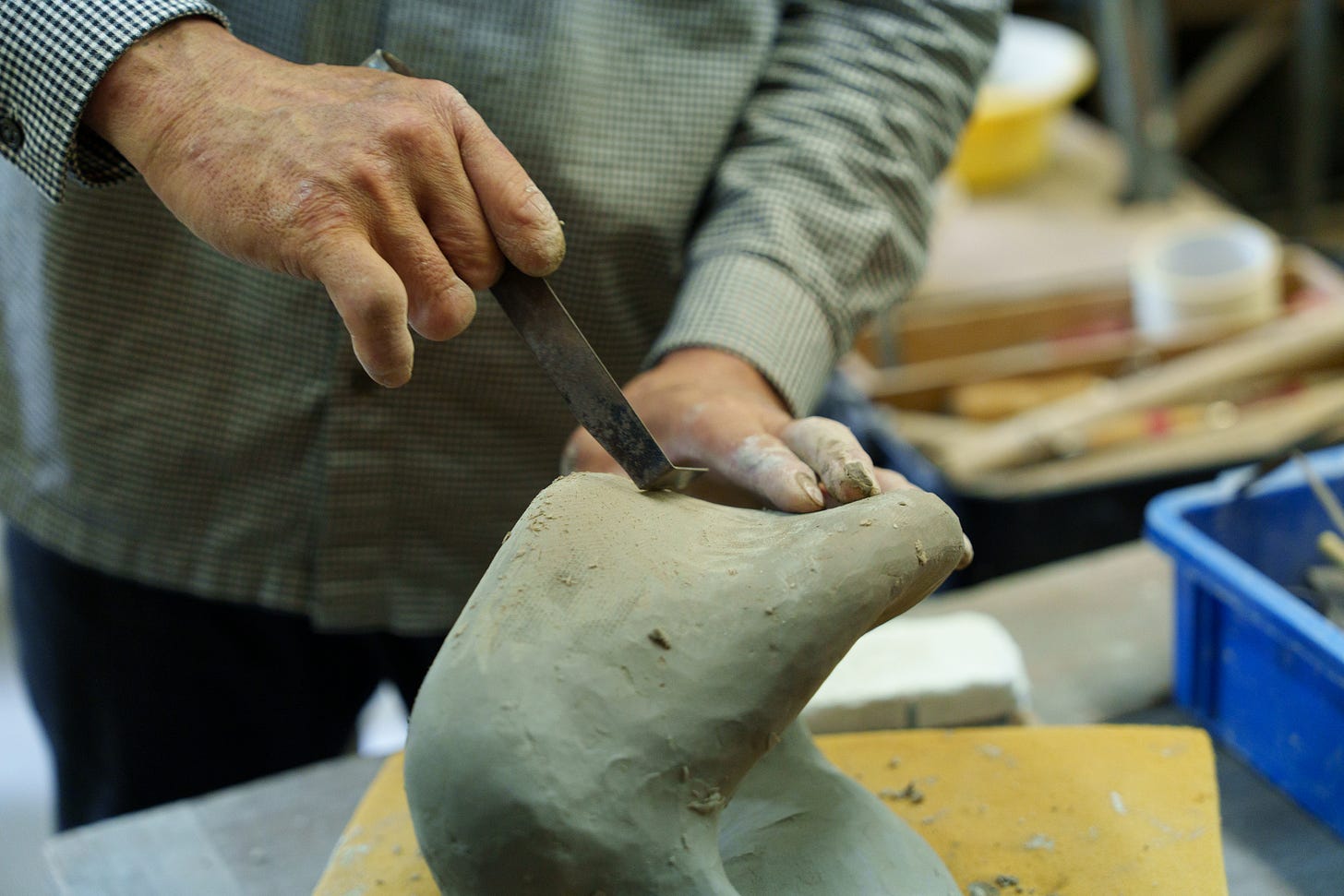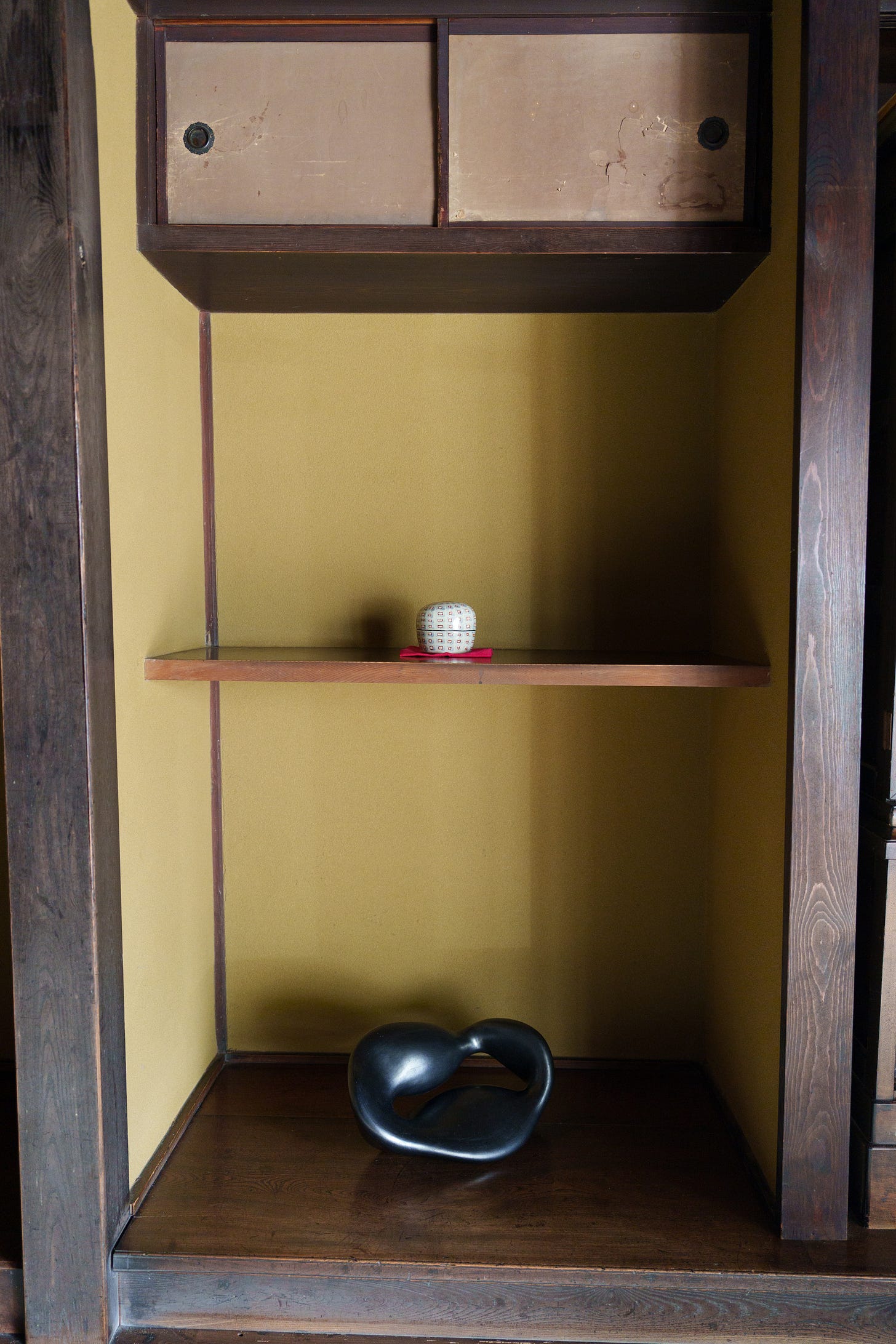MINO THE KINGDOM OF POTTERY: Imura Toshimi
From Roof Tiles to Sculptures
MINO: THE KINGDOM OF POTTERY
The region of Mino, in the Gifu Prefecture of Japan, has a long, rich history dating to the 7th century A.D., gaining prominence through the production of ceramics for the tea ceremony. Today, it remains a significant center of ceramic production. Many ceramicists who work in Mino create contemporary clay art. Do not think of the traditional tea bowl, which has been the touchstone of Japanese ceramics for centuries, and still made by most artists. While contemporary artists are connected to that tradition, they have elevated the clay to new horizons.
Imura Toshimi: From Roof Tiles to Sculptures
To Imura Toshimi, clay is a tool to craft spirituality. He wishes to express the transformations and cycles of nature which strongly reflects the clay’s source in the soil of Mino. His signature black closed sculptures are delicate, elegant, and graceful, representing the energies and harmony in nature, and elements like mountains, dunes, and rivers. Toshimi belongs to the Japanese genre of non-functional art objects, crafted in clay. The biomorphic forms and the sleek, lustrous surfaces are made possible by a distinctive technique that he devised.
Toshimi’s journey to becoming a ceramicist was emotional and filled with unsettling memories, but his passion and upbringing have led him to the clay. His transformation from traditional tea ware into the distinguished, minimalist, and abstract sculptures he creates today embodies the story of Japanese contemporary clay art, characterized by infusing centuries-old traditions and with modern innovations. It is the ceramic roof tiles, which he saw growing up in Mino, the heart of the Japanese tile industry, that serve as the departure point. It is from those beautiful tiles covering the roofs of the houses of Mino that he constructs his narratives, rooted in Mino’s soul. He builds his forms from slabs and coils, and as he spontaneously develops the forms, he adds interior ‘walls,’ which enable him to achieve hollow, closed forms. Polishing and sanding, using wooden and metal tools, and finalizing with sandpaper, are how he achieves the signature smooth, silky surfaces.
Toshimi’s parents were both potters from Osaka who met as students at the Kanazawa College of Art and moved to Mino in the early 60s. The local ceramicist community was hardly accepting of foreigners at that time. His memory of his father's hardship and difficulty selling his work, and being ostracized by the locals, all served to shape his ambition to fulfill his father’s dreams that the next generation would use his kiln. After graduating from Kanazawa College of Art, Toshimi returned to Mino and began by creating traditional tea bows, but eventually finding his own voice. His sculptures are elegant, biomorphic, and shining, filled with personality, and have the power to transform spaces.
Photography by © Takuro Kawamoto.
This visit was enabled thanks to Keiko Art International.




